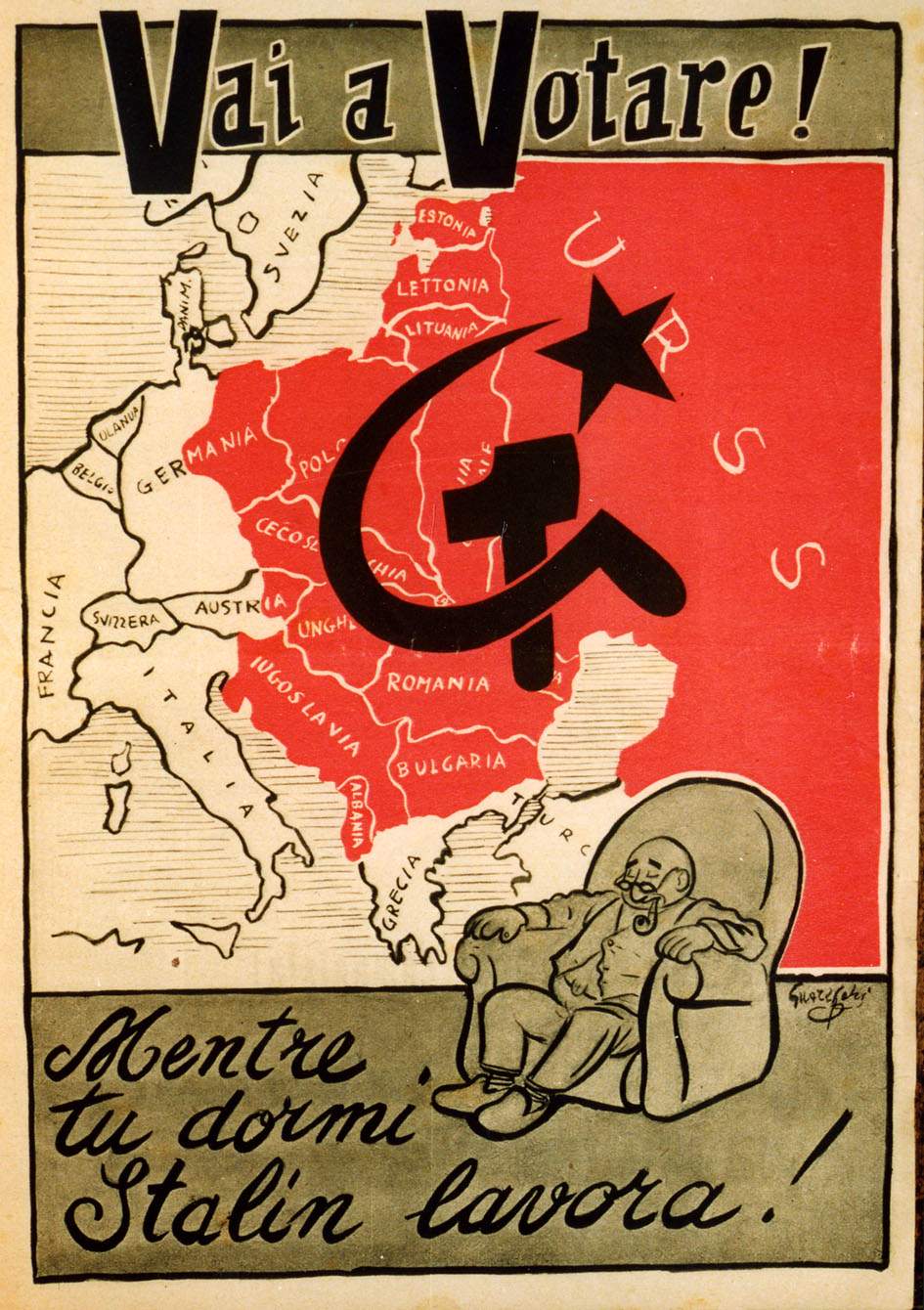Running from June 2 to July 1, 2018, at the Scuderie del Castello Sforzesco in Vigevano is the exhibition Italiani, al voto! Election Posters from 1945 to 1953, which presents a collection of 130 Italian election posters from the Maurizio Cavalloni collection in Piacenza: the period covered, as the title of the exhibition suggests, is 1945 to 1953.
Curated by Maurizio Cavalloni himself and promoted and organized by the Fondazione di Piacenza e Vigevano, in collaboration with the Municipality of Vigevano, the exhibition covers the period of the Second Postwar period, a period that saw in 1946 the Monarchy-Republic institutional referendum, the 1948 general elections, the 1951 local elections and the second round of elections in 1953: a period of fundamental importance for the formation of the Italian Republic.
“The Foundation of Piacenza and Vigevano,” says President Massimo Toscani, “is very pleased to promote this exhibition of political posters from the Maurizio Cavalloni Collection, which presents an iconographic heritage of great importance and considerable educational value. The works exhibited here precede the birth and retrace the first steps of our Republic. A history written on the walls, made up of drawings, illustrations, slogans, perhaps a bit far from our current sensibility, but which demonstrate the passion and dialectic that underlies our democracy. It is no coincidence that we have chosen to open this review on a highly symbolic date: June 2, on which Italian Republic Day is celebrated and which, in 1946, had sanctioned its birth.”
The review lends itself to different levels of reading (historical, artistic, communicative) and focuses mainly on posters from the decisive two-year period 1946-1948: especially rich is the section on the 1948 elections, when a clash took place between the Christian Democrats and the Popular Democratic Front for the constitution of the government of the first republican parliament. Two forces faced each other, embodying two opposing worldviews: on one side De Gasperi, the United States, the Church and capitalism; on the other side Togliatti and Nenni with the USSR and communism. Artistically, the DC accorded great importance to pictures, which were used more than texts (which often resolved into slogans of few words), while the Popular Front stimulated the rational aspect of the electorate with more word-rich propaganda material.
Hours: Tuesday through Friday from 2 to 6 p.m., Saturdays and holidays from 10 a.m. to 7:30 p.m. Closed Mondays. Free admission. For information call the Castle Infopoint (0381 691636) or email auditoriumsandionigi@lafondazione.org.
Pictured: 1948 poster of the DC and Civic Committees, designed by Giovannino Guareschi.
 |
| Postwar election posters are on display in Vigevano |
Warning: the translation into English of the original Italian article was created using automatic tools. We undertake to review all articles, but we do not guarantee the total absence of inaccuracies in the translation due to the program. You can find the original by clicking on the ITA button. If you find any mistake,please contact us.